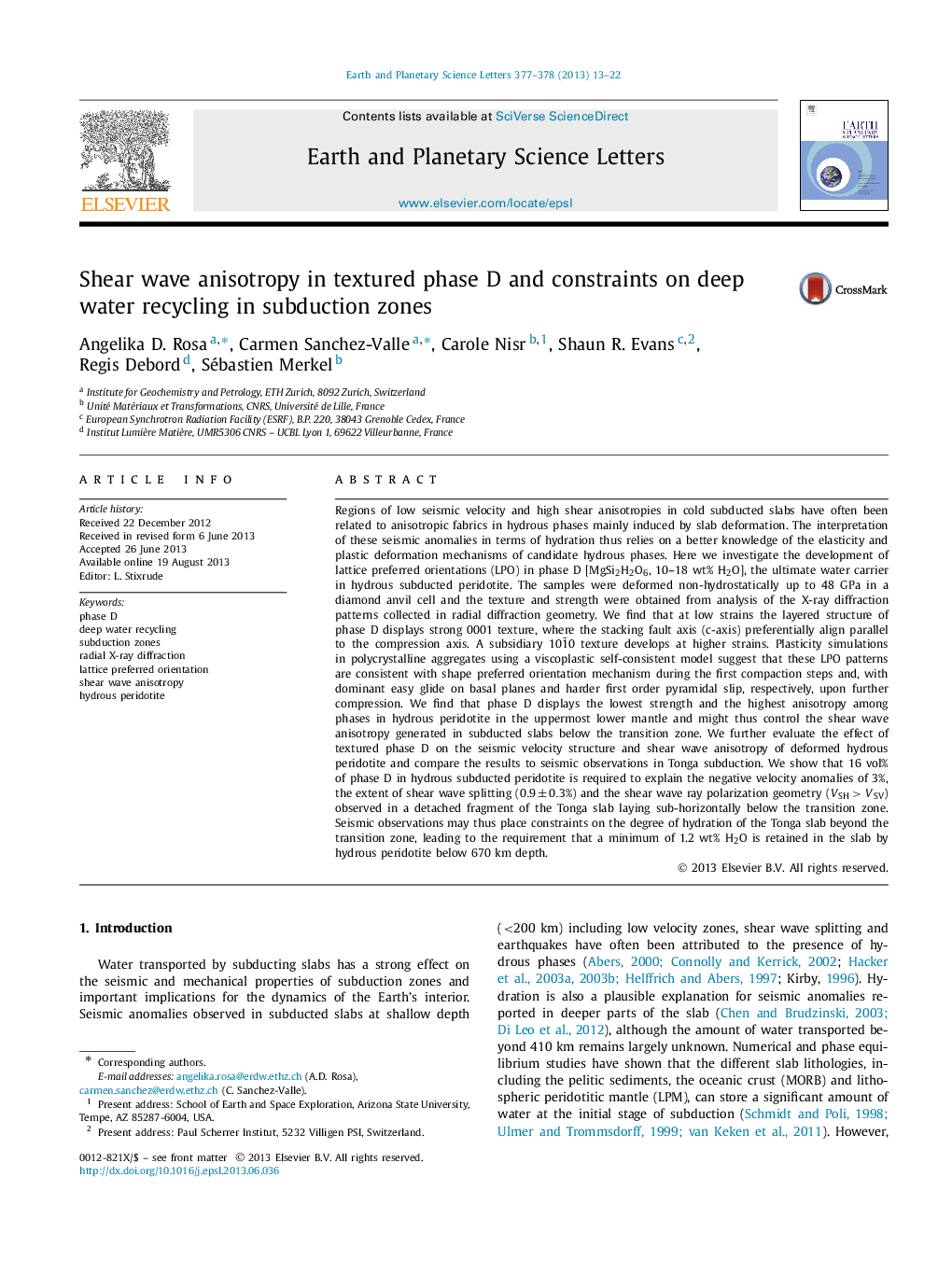| کد مقاله | کد نشریه | سال انتشار | مقاله انگلیسی | نسخه تمام متن |
|---|---|---|---|---|
| 6429991 | 1634778 | 2013 | 10 صفحه PDF | دانلود رایگان |

- Phase D forms strong textures already at low stresses.
- Textured phase D is a potential source of seismic shear anisotropy in Tonga slab.
- Hydration at depth may be detectable seismically if water is stored in phase D.
- Implications for deep water recycling into the lower mantle via subduction.
Regions of low seismic velocity and high shear anisotropies in cold subducted slabs have often been related to anisotropic fabrics in hydrous phases mainly induced by slab deformation. The interpretation of these seismic anomalies in terms of hydration thus relies on a better knowledge of the elasticity and plastic deformation mechanisms of candidate hydrous phases. Here we investigate the development of lattice preferred orientations (LPO) in phase D [MgSi2H2O6, 10-18 wt% H2O], the ultimate water carrier in hydrous subducted peridotite. The samples were deformed non-hydrostatically up to 48 GPa in a diamond anvil cell and the texture and strength were obtained from analysis of the X-ray diffraction patterns collected in radial diffraction geometry. We find that at low strains the layered structure of phase D displays strong 0001 texture, where the stacking fault axis (c-axis) preferentially align parallel to the compression axis. A subsidiary 101¯0 texture develops at higher strains. Plasticity simulations in polycrystalline aggregates using a viscoplastic self-consistent model suggest that these LPO patterns are consistent with shape preferred orientation mechanism during the first compaction steps and, with dominant easy glide on basal planes and harder first order pyramidal slip, respectively, upon further compression. We find that phase D displays the lowest strength and the highest anisotropy among phases in hydrous peridotite in the uppermost lower mantle and might thus control the shear wave anisotropy generated in subducted slabs below the transition zone. We further evaluate the effect of textured phase D on the seismic velocity structure and shear wave anisotropy of deformed hydrous peridotite and compare the results to seismic observations in Tonga subduction. We show that 16 vol% of phase D in hydrous subducted peridotite is required to explain the negative velocity anomalies of 3%, the extent of shear wave splitting (0.9±0.3%) and the shear wave ray polarization geometry (VSH>VSV) observed in a detached fragment of the Tonga slab laying sub-horizontally below the transition zone. Seismic observations may thus place constraints on the degree of hydration of the Tonga slab beyond the transition zone, leading to the requirement that a minimum of 1.2 wt% H2O is retained in the slab by hydrous peridotite below 670 km depth.
Journal: Earth and Planetary Science Letters - Volumes 377â378, September 2013, Pages 13-22